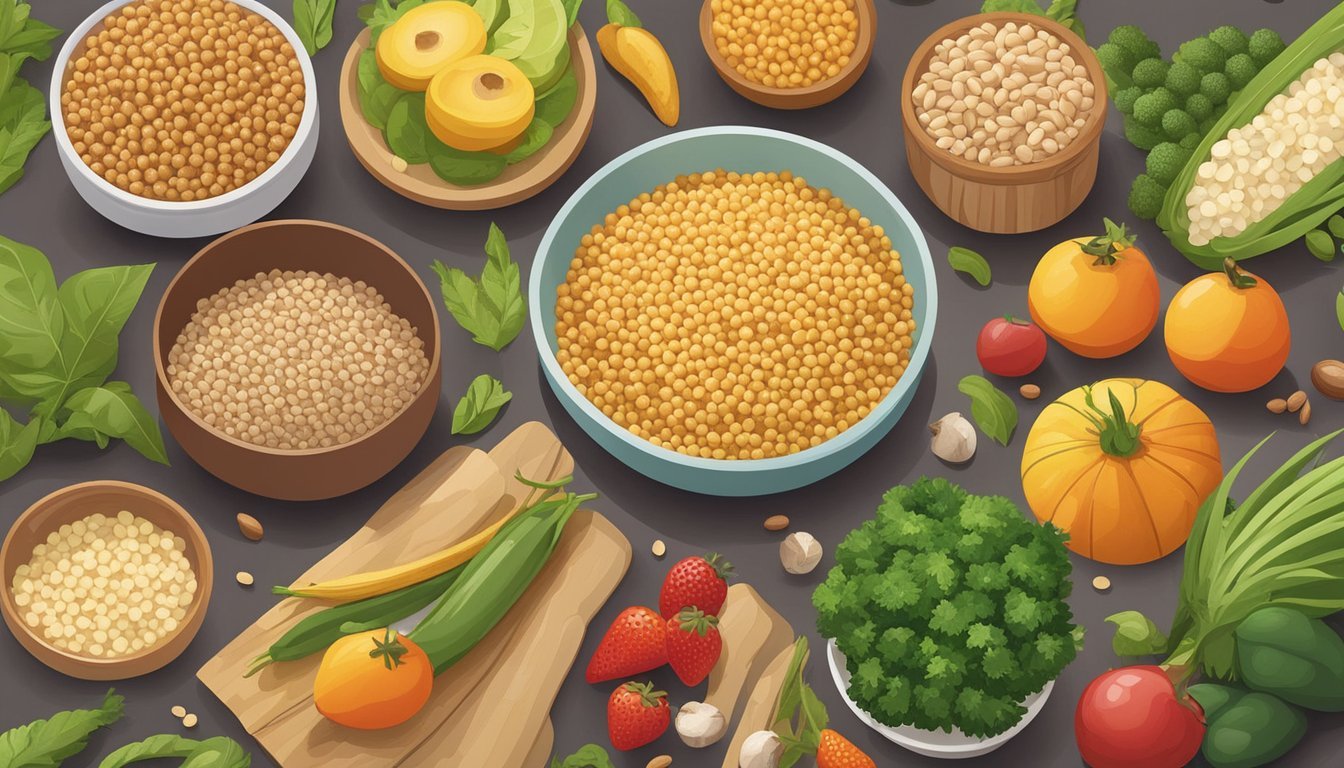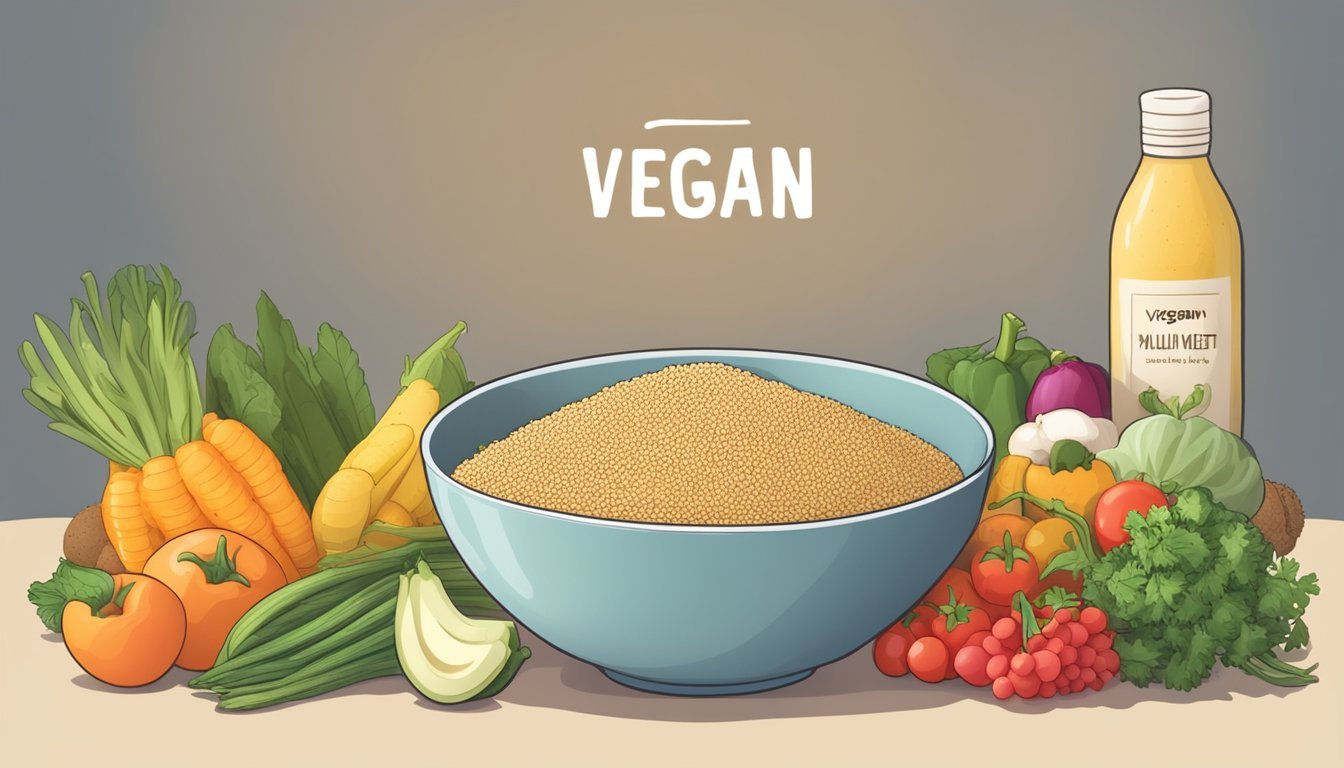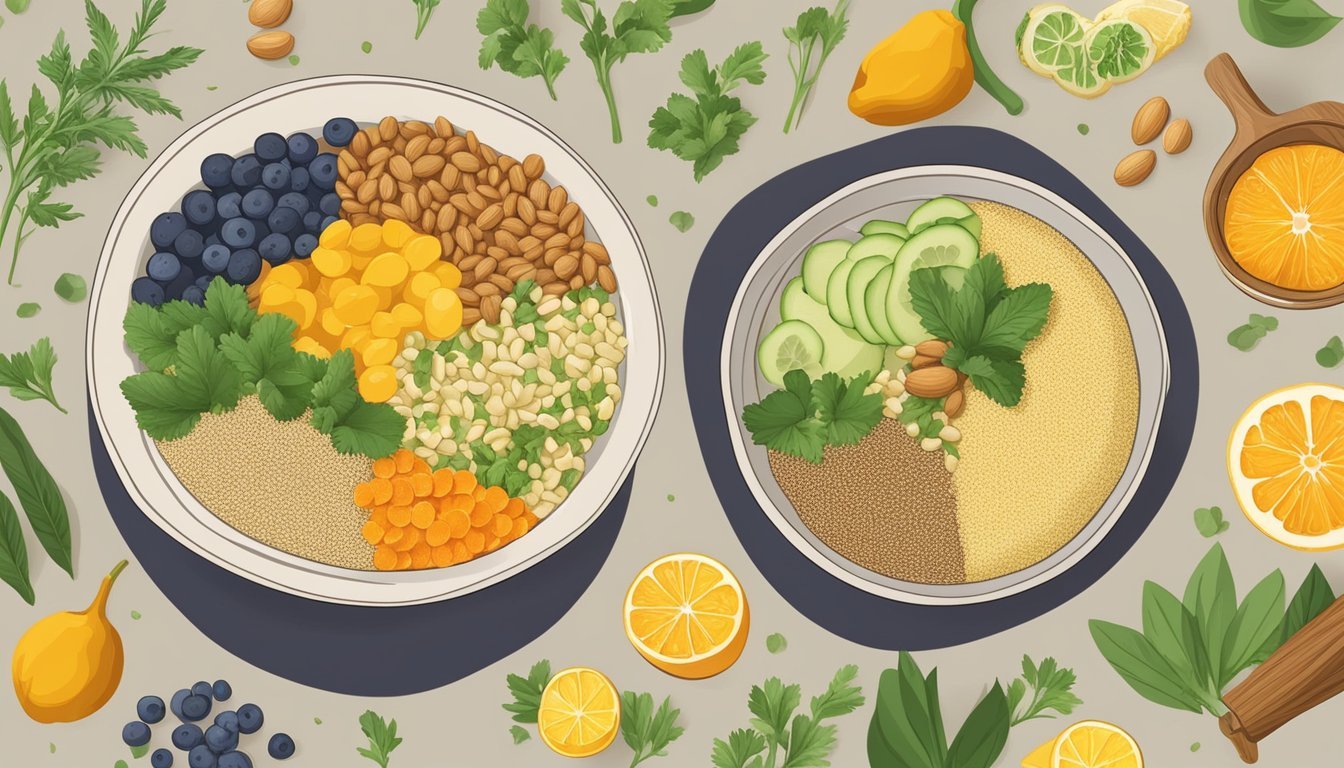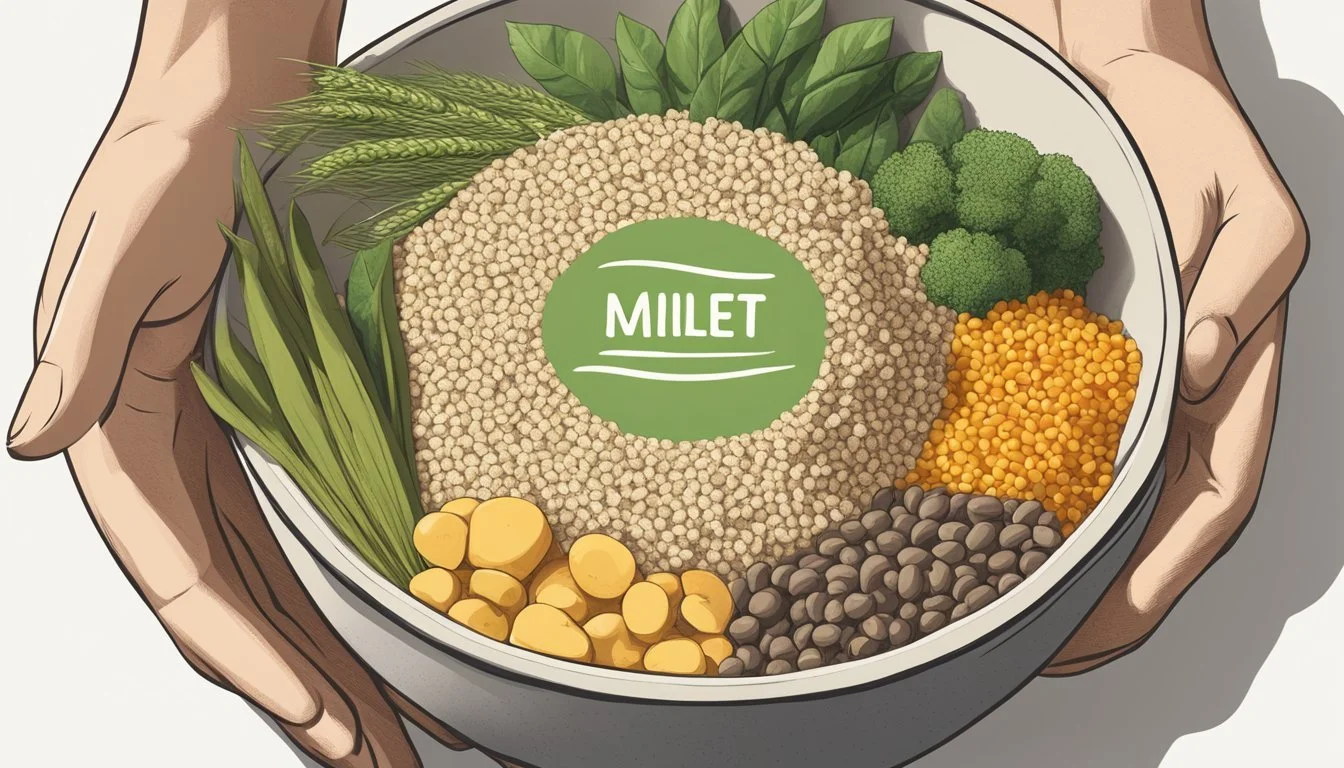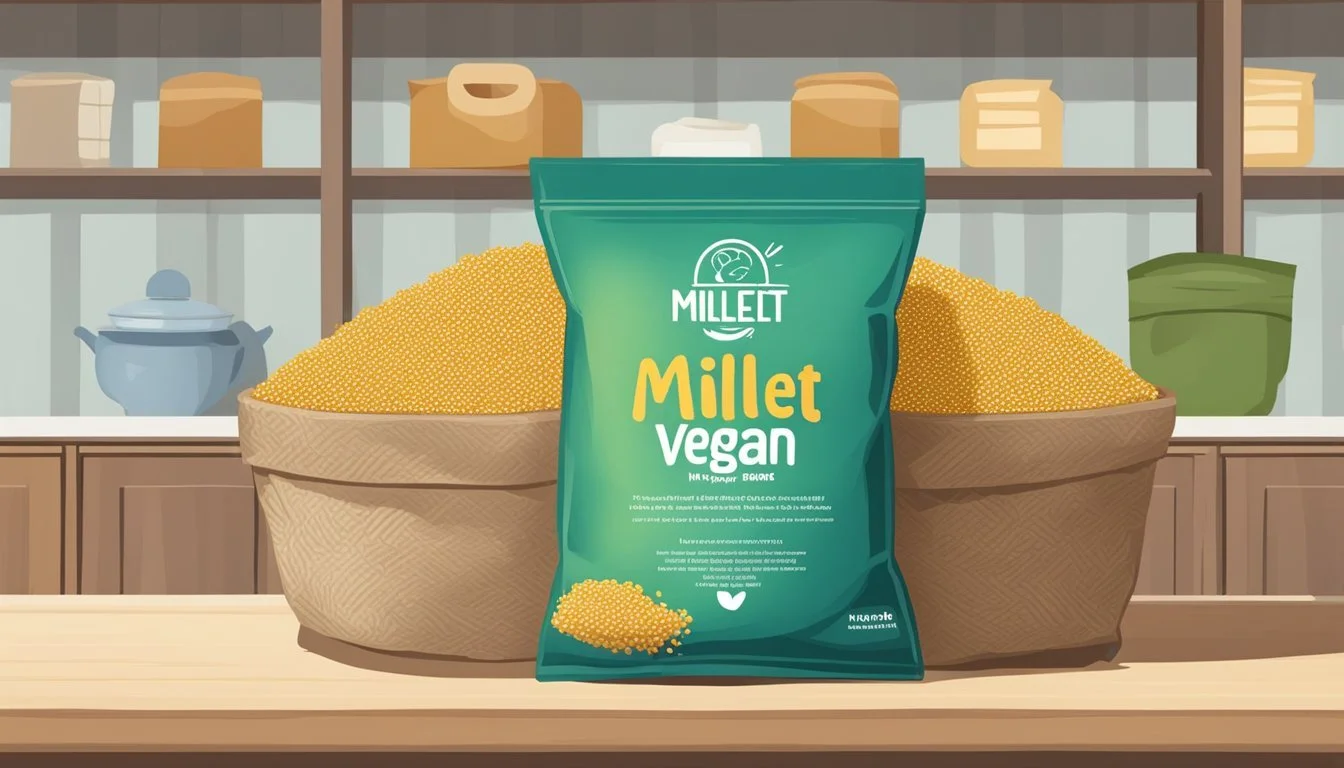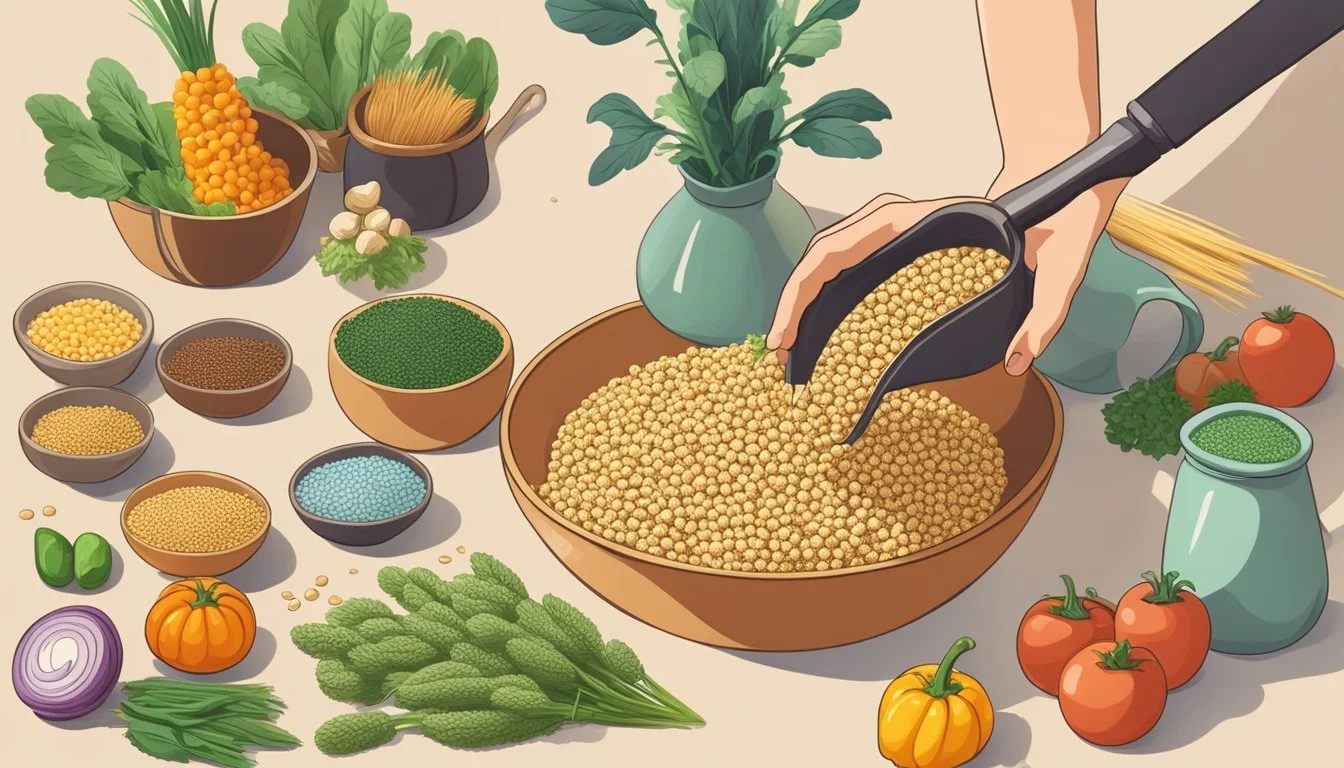Is Millet Vegan?
Unveiling the Truth About This Ancient Grain
Millet, a group of small-seeded grasses widely cultivated as cereal crops, is inherently vegan. This grain is a staple in many parts of the world and is favored not only for its nutritional benefits but also for its versatility in cooking. As a plant-based ingredient, millet serves as an excellent option for those following a vegan diet, providing a source of protein, fiber, and essential nutrients without any animal products or byproducts.
With its growing popularity among health-conscious individuals, millet is appreciated for being naturally gluten-free and easy to digest. The grain can be toasted, boiled, or simmered to create a variety of dishes ranging from savory to sweet. Vegans often use millet as a replacement for grains that might not meet their dietary preferences, taking advantage of its mild flavor profile that works well with an assortment of seasonings and vegetables.
The methods for preparing millet are straightforward and typically similar to those of other grains, often involving simmering the millet in water or a plant-based milk until tender. Millet's ability to absorb flavors and its textural diversity—ranging from fluffy to creamy depending on the preparation—makes it a valuable addition to the vegan kitchen. Whether incorporated into salads, fashioned into porridges, or used as a base for hearty entrees, millet's vegan-friendly nature supports its status as a nourishing, adaptable food choice.
What Is Millet?
Millet comprises a group of highly nutritious, small-seeded grasses widely regarded as whole grains. It is praised for its protein content and compatibility with a vegan diet due to its plant-based origin.
Origin and Types
Millet has a rich history, having been cultivated for thousands of years in regions such as Asia and Africa. The term "millet" encompasses various types including pearl, foxtail, proso, and finger millet. Each type varies slightly in color, size, and nutritional properties, but all are considered staple crops in various parts of the world due to their resilience to harsh growing conditions.
Nutritional Profile
Millet's nutritional profile is noteworthy, especially considering its high protein content, which makes it favorable for vegan diets. It is also rich in:
Iron: Crucial for blood health and energy levels.
Calcium: Important for bone strength.
Potassium: Helps regulate fluid balance and nerve signals.
Vitamins: Contains B vitamins, contributing to overall wellness.
A single cup of cooked millet provides approximately 6 grams of protein, and millet seeds are gluten-free, making them a safe choice for individuals with gluten sensitivities. Furthermore, millet possesses significant amounts of dietary fiber, which supports digestive health.
Veganism and Food Choices
When exploring veganism, it is crucial to understand what foods are considered vegan and the nutritional benefits of plant-based eating.
Defining Vegan Foods
Vegan foods are those that do not contain any animal products or by-products. This includes meat, dairy, eggs, and honey. Instead, vegans focus on plant-based foods such as:
Fruits and vegetables
Grains like rice, pasta, and millet
Legumes, nuts, and seeds
Plant-based proteins like tofu and tempeh
Dairy alternatives such as soy milk, almond milk, and vegan cheese
Nutritional yeast, which is often used as a cheese flavor substitute
Items like millet are inherently vegan as they are a whole grain sourced directly from plants. Millet and similar grains can serve as nutritious staples in a vegan diet, providing essential carbohydrates for energy.
Benefits of Vegan Eating
Adopting a vegan diet can offer numerous health benefits, including but not limited to:
Lower cholesterol levels due to the elimination of dietary cholesterol found in animal products
A possible reduction of heart disease risks thanks to a diet high in fruits, vegetables, and whole grains
Improved digestion from a greater intake of dietary fiber
A diverse range of nutrients provided by various plant-based foods
Vegans often use fortified foods or supplements to meet their nutritional needs, ensuring adequate intake of vitamins and minerals such as B12, often found in non-dairy milks and nutritional yeast. Plant-based milks not only serve as a dairy-free alternative but also often contain added vitamins and minerals to enhance their nutritional profile.
Millet in a Vegan Diet
Millet is a naturally vegan grain that offers both versatility and nutritious benefits to those following a vegan diet. Its ability to serve as a meat substitute further enhances its appeal in various vegan recipes.
Millet's Vegan Status
Millet is a plant-based grain, which confirms its status as vegan. This ancient grain does not involve any animal products or by-products in its cultivation, processing, or cooking. Millet provides a valuable source of nutrients, including vitamin B6, folate, zinc, and iron, which are important in a vegan lifestyle.
Versatility of Millet
Millet can be incorporated into a diet in numerous ways, proving its versatility. Vegan millet recipes range from hearty salads to satisfying mains. Its texture allows it to be cooked in a similar fashion to rice or quinoa, yet it can also be ground into flour and used for baking. Millet can be seasoned with a variety of herbs and spices, lending itself to diverse culinary applications.
Salads: Tossed with vegetables and a flavorful dressing.
Bowls: Served as a base with toppings such as roasted veggies and beans.
Breads: Gluten-free millet flour can be used for baking bread.
Millet as a Meat Alternative
Given its protein content, millet can act as a meat substitute within vegan nutrition. Its capabilities to absorb flavors and provide satiety are particularly useful in vegan millet recipes designed to mimic traditional meat dishes. Millet can be fashioned into "meatballs" or used in "burgers" to offer a satisfying chew and density mimicking meat.
Millet "meatballs": Bound with vegan binders and seasoned for taste.
Millet burgers: Combined with vegetables and spices, formed into patties, and cooked to a desirable crispness.
Culinary Uses of Millet
Millet stands out as a versatile grain in vegan cuisine, appreciated for its nutty flavor and nutritious profile, suited for both sweet and savory dishes.
Cooking Millet
To cook millet, one typically starts by rinsing the grains to remove any bitterness. It can be toasted in a dry pan for a few minutes to enhance its nuttiness. For basic preparation, the ratio of millet to water is usually 1:2. Bring the millet and water to a boil, reduce to a simmer, cover, and cook for about 18-20 minutes or until the liquid is absorbed and the grains are fluffy.
Basic Millet Cooking Ratio
1 cup millet
2 cups water or vegetable broth
Millet-Based Dishes
Millet easily incorporates into various dishes. Vegan breakfast porridge can be made by simmering millet in plant-based milk, like almond milk, until creamy. Millet tabbouleh substitutes traditional bulgur with cooked millet, tossed with parsley, tomatoes, and a lemony dressing. Stir-fries can include millet as a base, adding vegetables and tofu for a complete meal.
Sample Vegan Millet-Based Dishes
Millet Porridge
Millet Tabbouleh
Millet Stir-Fry with Vegetables
Creative Vegan Millet Recipes
Millet's adaptability shines in creative vegan recipes. It can be ground into millet flour for gluten-free baking. For a unique twist, millet flakes can be used as a crunchy coating for plant-based proteins. Incorporating millet into vegan patties by combining it with mashed beans and spices can create a satisfying entrée.
Ideas for Creative Millet Use
Ground as millet flour for gluten-free bread.
Millet flakes for breading.
Millet and bean patties.
Ingredients and Flavor Pairings
Millet serves as a versatile base in vegan dishes, adopting the flavors of the spices, fruits, and vegetables it's paired with. Its mild, nutty taste and fluffy texture make millet an ideal canvas for a variety of flavor pairings.
Complementary Spices and Herbs
For a savory touch, spices and herbs can greatly enhance the taste of millet. Salt is fundamental, often bringing out the intrinsic flavors of other ingredients. Black pepper and cumin offer a warm, earthy note, while turmeric provides a vibrant color and a subtle, bitter flavor. Curry powder blends several spices and can give millet a distinctive, aromatic taste appropriate for Indian-inspired dishes.
Millet can also benefit from the inclusion of herbs such as oregano and parsley. The addition of fresh lemon juice or lemon pepper further brightens the dish, providing a crisp, zesty finish. For a bit of heat, chili powder introduces a spicy element that can be balanced with the earthiness of the grain.
Fruits and Vegetables for Millet Dishes
Fruits and vegetables are excellent complements to millet, adding both flavor and nutritional value. Fresh fruit like orange segments, strawberries, and blueberries can be included for a sweet contrast. The sweetness and acidity of fruits work well with the mild taste of millet, making it suitable for breakfast porridges or dessert-like preparations.
On the vegetable side, carrots, mushrooms, and bell peppers contribute a natural sweetness and a satisfying crunch to millet dishes. Zucchini, onion, and garlic offer additional layers of flavor, each enhancing the grain's profile in unique ways. For more Mediterranean flair, eggplant and carrot can be roasted with a touch of olive oil and paired with millet as a hearty main or side dish.
Nutritional Enhancements
Incorporating millet into a vegan diet can significantly enhance its nutritional profile, particularly by boosting protein content and adding healthy fats that are essential for a balanced diet.
Protein Boosters
Millet inherently contains a respectable amount of protein, with approximately 6.11 grams per cup when cooked. For vegans seeking to augment their protein intake, pairing millet with protein-dense foods can be particularly beneficial.
Options include:
Nuts and Seeds: A handful of nuts like almonds or hazelnuts, or seeds such as chia or flaxseeds, can add both protein and a satisfying crunch to a millet-based meal.
Legumes: Combining millet with legumes like lentils or beans forms a complete protein, ensuring all essential amino acids are present.
Adding Healthy Fats
While millet is low in fat, it serves as a versatile base for incorporating healthy fats into a vegan diet.
Consider the following sources:
Vegan Butter and Oils: A small serving of vegan butter or a drizzle of high-quality oils such as olive oil can boost the fat content, contributing to a richer flavor and increased satiety.
Nut and Seed Butters: Stirring in a spoonful of almond or hazelnut butter not only adds depth to the dish but also provides beneficial mono- and polyunsaturated fats.
Coconut Milk: For creamy preparations, coconut milk can be used as a cooking liquid for millet, enhancing both flavor and nutritional value.
By thoughtfully including these protein and fat sources, vegans can transform millet into a robust component of their diet.
Allergen Considerations
When evaluating millet as part of a vegan diet, understanding potential allergens is crucial. Millet is naturally gluten-free, making it a suitable grain for individuals with celiac disease or gluten sensitivity. Unlike wheat, barley, and rye, millet does not contain gluten proteins that trigger allergic reactions.
Cross-Contamination: While millet itself is gluten-free, it's essential to ensure that it is processed in a facility that does not handle gluten-containing grains to prevent cross-contamination. Always check packaging labels for certifications or allergen warnings.
Nutritional Profile: As a vegan option, millet provides essential nutrients that might be less prevalent in a diet free from animal products. It offers a good source of iron, B vitamins, and especially important for vegans, it is a source of protein.
Other Allergens: Though millet is safe regarding gluten, there could be other allergens to consider. It's important for consumers to be aware of their specific allergies and cross-reference with the millet products they purchase.
Rice as an Alternative: For those who may have sensitivities to millet or other grains, rice is another gluten-free and vegan-friendly alternative. However, as with millet, the risk of cross-contamination is present if processed in facilities that also handle allergens.
In summary, millet can be a safe and nutritious part of a vegan diet while paying attention to potential allergens and cross-contamination. For consumers with specific dietary needs, it is advisable to thoroughly check product labels and opt for certified gluten-free options where necessary.
Millet Preparation Tips
Millet is a versatile grain that thrives under a variety of preparation methods. Mastery of these cooking techniques ensures a perfectly prepared millet dish.
Soaking and Cooking Methods
Soaking millet overnight can greatly improve its texture and digestibility. After soaking, one should thoroughly drain and rinse the grains. For a more enhanced flavor, toasting millet in a skillet until it starts to brown before cooking is advisable. Cooking millet on the stovetop is straightforward—it typically uses a ratio of 1 cup dry millet to 2 cups of liquid. Bring the mixture to a boil, then reduce the heat, cover, and let simmer for 18-20 minutes until the liquid is absorbed and the grains are fluffy.
Flavoring and Texturing Tips
The subtle flavor of millet can be enriched with the addition of spices, sweeteners, and other flavorings. When aiming for a sweet dish, one might consider incorporating maple syrup or vanilla extract to enhance the natural nuttiness of millet. For savory dishes, using vegetable broth as the cooking liquid or adding a dash of soy sauce or tamari can add depth. Experiment with garlic powder, paprika, and chile powder for a spicy kick, or keep it simple with a sprinkle of salt and a pat of vegan butter to complement its natural taste. Remember, the key to perfecting the texture of millet lies in the balance of cooking time and liquid ratios, ensuring it's neither too dry nor overly mushy.
Millet Recipes
Millet, a highly nutritious grain, serves as the basis for a variety of vegan recipes. These dishes can range from hearty savory meals to delightful sweet treats, all of which are plant-based and can incorporate diverse ingredients like tofu, nuts, and plant-based milks such as almond milk.
Savory Millet Meals
Savory dishes made with millet are versatile and can be tailored to suit any taste. A classic Millet Loaf can mimic the heartiness of traditional meatloaf. Preparing it involves cooking millet until tender, then combining it with sautéed onions, garlic, and a medley of spices like sage and thyme. Baking this mixture yields a robust vegan entrée.
Millet Tabbouleh is another delightful option, replacing bulgur wheat with millet for a gluten-free twist. It typically features fresh herbs, lemon pepper, and paprika for a flavorful and light side dish or salad.
For a quick meal, Millet Cakes with Carrots & Spinach require cooking millet, then forming patties with sautéed vegetables. Fry these patties until golden brown for a nutritious and satisfying meal.
Sweet Millet Treats
When it comes to sweets, millet's adaptability shines through. Creamy Vanilla Millet Porridge is a simple, comforting breakfast option. One can prepare it by simmering millet in a mixture of water and almond milk until creamy, then sweetening it according to taste with a vegan sweetener.
Recipe Main Ingredients Preparation Method Creamy Vanilla Millet Porridge Millet, almond milk, sweetener Simmer millet in almond milk, add sweetener. Millet Pudding Millet, tofu, nuts, plant-based milk, sweetener Blend tofu with nuts, sweetener, and milk, combine with cooked millet and bake.
In summary, millet is a versatile ingredient in vegan cooking, suitable for a range of delectable dishes, from savory to sweet.
Storing Millet
Storing millet properly is crucial for maintaining its freshness and extending its shelf life. Millet should be kept in an airtight container to protect it from moisture and pests. Glass, ceramic, or metal containers with tight-fitting lids are ideal choices. If one prefers using food-grade plastic bags, they must ensure the bags are clean and dry before adding the millet. It's important to leave some space at the top of the bag for any potential expansion, and excess air should be squeezed out before sealing to create an airtight environment.
Location is as important as the storage vessel. The chosen spot should be cool, dry, and away from direct sunlight, which can degrade millet over time. A cupboard or pantry commonly serves as an appropriate storage area.
For extended storage periods, one might consider refrigeration or freezing, which can significantly prolong the millet's usability. When refrigerated or frozen, packaging should still be airtight.
Shelf Life
Room temperature: up to 2 months
Refrigerated: 4-6 months
Frozen: 1 year or more
Monitor closely for any signs of spoilage, such as a rancid smell or changes in color and texture. If millet appears or smells off, it's best to discard it to prevent the consumption of spoiled grains. Storing millet correctly ensures that it retains its qualities and remains a versatile, plant-based ingredient in a variety of vegan dishes.
Recipe Customization
Customizing millet recipes for a vegan diet involves substituting animal-derived ingredients with plant-based alternatives. This section provides specific guidance on how to do just that without compromising on the texture or flavor of the dish.
Vegan Ingredient Substitutions
Millet is inherently vegan, making it an excellent base for various dishes. To maintain the vegan quality of millet dishes, one must carefully select substitutes for non-vegan items.
Dairy: Replace butter with vegan butter or oils and swap cow's milk with plant-based milk like almond, soy, or oat.
Cheese: Opt for vegan cheese made from nuts or use nutritional yeast for a cheesy flavor.
Sweeteners: Instead of honey, choose maple syrup or other vegan sweeteners like agave nectar.
Texture and Flavor Variations
Enhancing the natural flavor of millet while keeping the dish vegan can be achieved through various additions and techniques.
Spices & Herbs: Incorporate a mix of spices such as cumin, cinnamon, or paprika to add depth. Fresh herbs can brighten the dish.
Fruit & Nuts: For sweetness or crunch, include a range of fresh fruit, nuts, or seeds like pumpkin seeds or sunflower seeds.
Protein: For a protein boost, consider adding cooked tofu or other legumes, which also enrich the dish's texture.
Toppings: A dollop of vegan yogurt or a sprinkle of homemade nut parmesan can elevate the final presentation.
Cultural Context
Millet has a storied place within various culinary traditions around the globe, and its role in vegan diets is becoming increasingly significant due to its plant-based origin and nutritional benefits.
Millet in Different Cuisines
Traditionally, millet is a staple in many African and Asian cuisines. In parts of Africa, pearl millet is transformed into a nourishing porridge or used in flatbreads. Similarly, in India, finger millet is commonly used to prepare roti, a type of unleavened bread. These dishes showcase millet's versatility in cooking.
African Cuisine: Porridge, thickened stews, breads.
Indian Cuisine: Rotis, dosas, puddings.
The Rise of Millet in Vegan Diets
As global interest in vegan diets surges, millet is gaining traction in North America for its suitability in vegan recipes. This grain complements a vegan lifestyle since it contains no animal products and is beneficial for those seeking to replace gluten or seeking nutrient-dense, plant-based foods. American vegans incorporate millet into dishes like:
Breakfast: Millet-based cereals or porridge flavored with fruits and nuts.
Entrées: Stuffed vegetables with millet or millet patties.
Within these vegan creations, millet plays a central role, affirming its adaptability and nutritional value.
Health and Dietary Impact
Millet, as a gluten-free grain rich in protein and fiber, stands out in vegan diets for both its nutritional value and health benefits. This section sheds light on how millet can enhance digestive health and aid in weight management.
Digestive Health Benefits
Millet contributes significantly to digestive health due to its high fiber content. Dietary fiber helps to bulk up stool and promote regular bowel movements, reducing the risk of constipation. Being gluten-free, millet is also an excellent grain choice for individuals with celiac disease or non-celiac gluten sensitivity. The presence of prebiotic fibers in millet further aids in maintaining a healthy gut microbiota.
Weight Management with Millet
Incorporating millet into a diet can be beneficial for weight management. It has a lower glycemic index (GI) compared to many other grains, contributing to more stable blood sugar levels and prolonged satiety after meals. The protein in millet helps in building and repairing tissues while also providing a sense of fullness, potentially reducing overall calorie intake. Here's a quick breakdown of its benefits:
High in Fiber: Keeps you fuller for longer, preventing overeating.
Protein Content: Supports muscle maintenance and a feeling of satiety.
Low Glycemic Index: Helps in managing blood sugar spikes.

